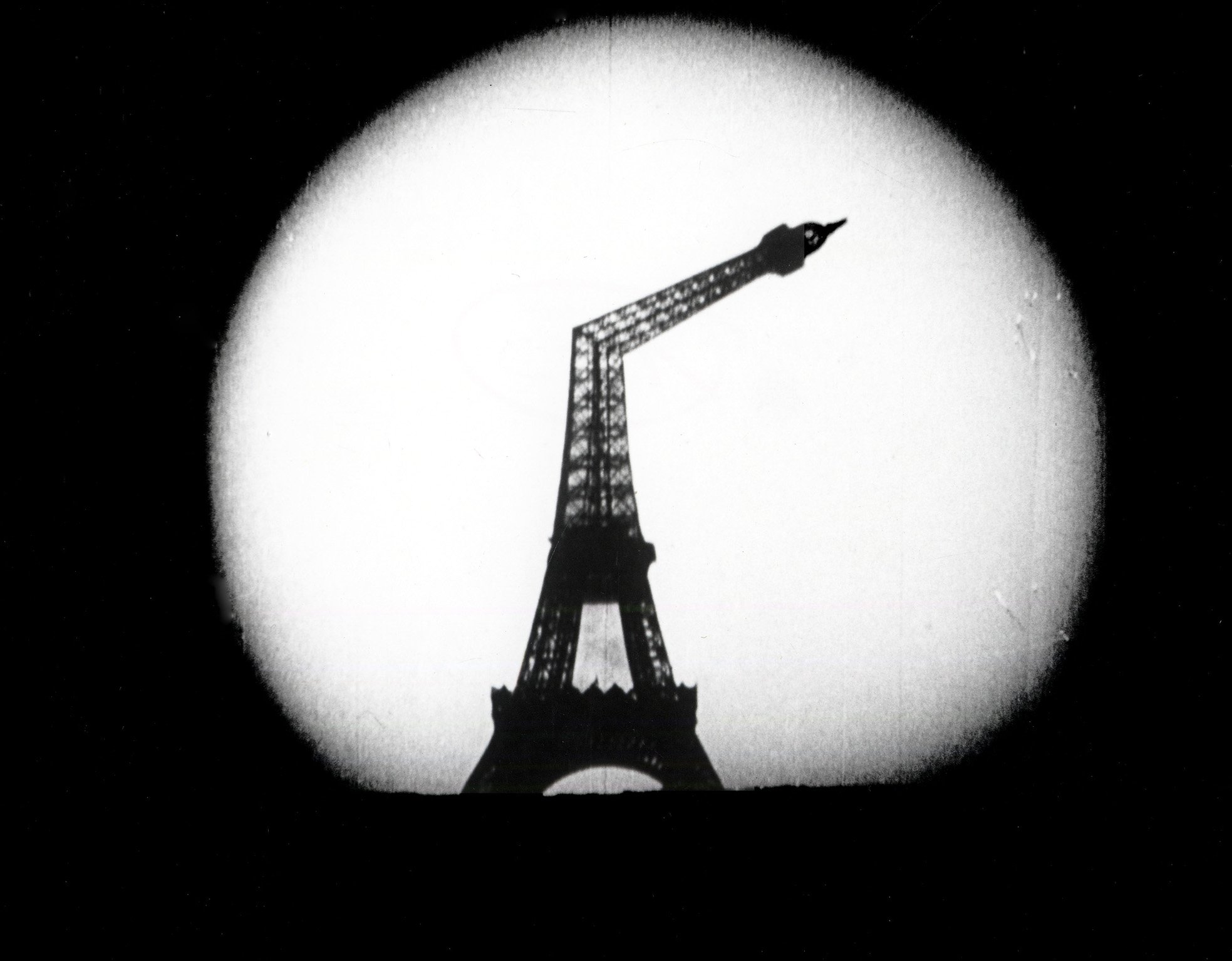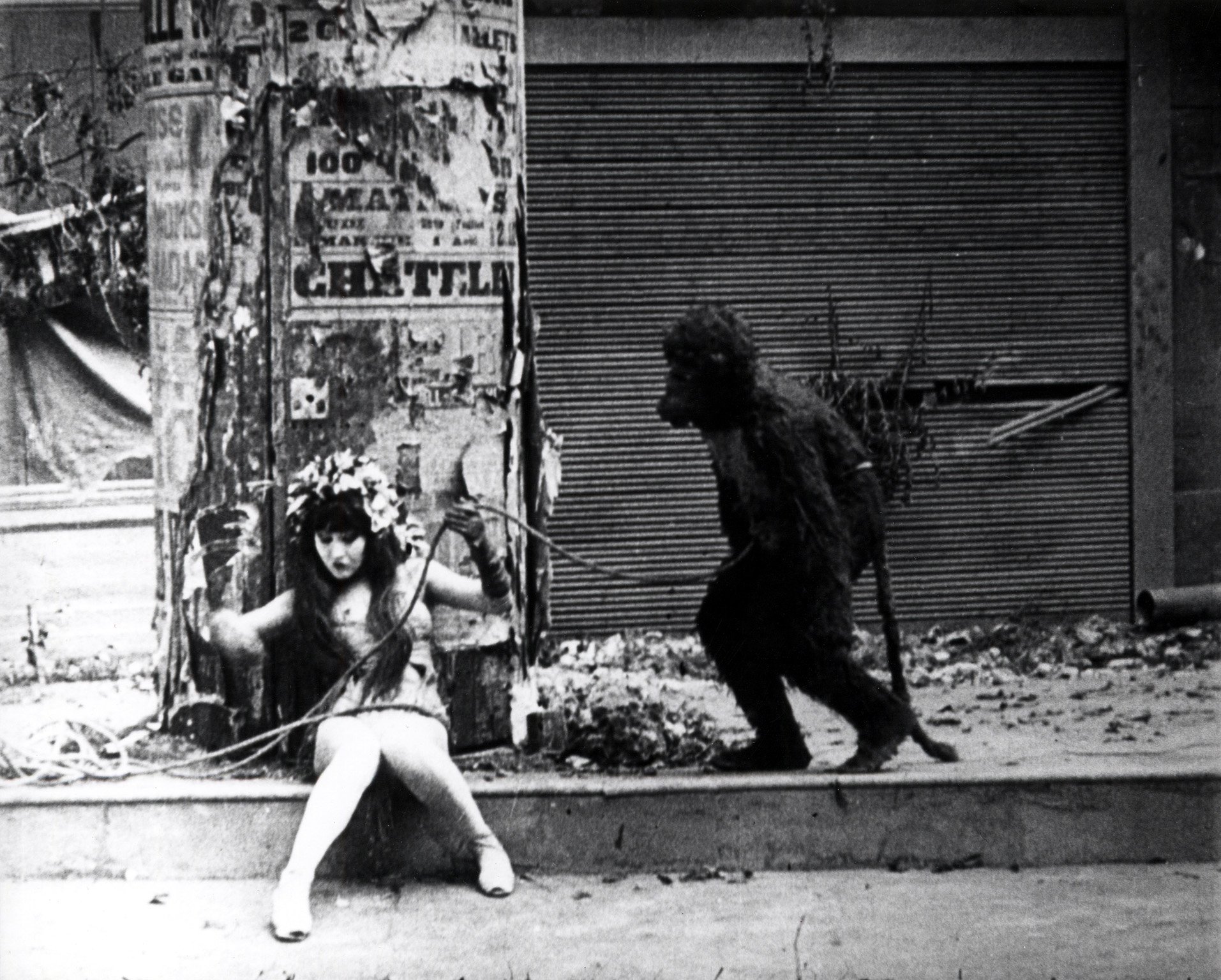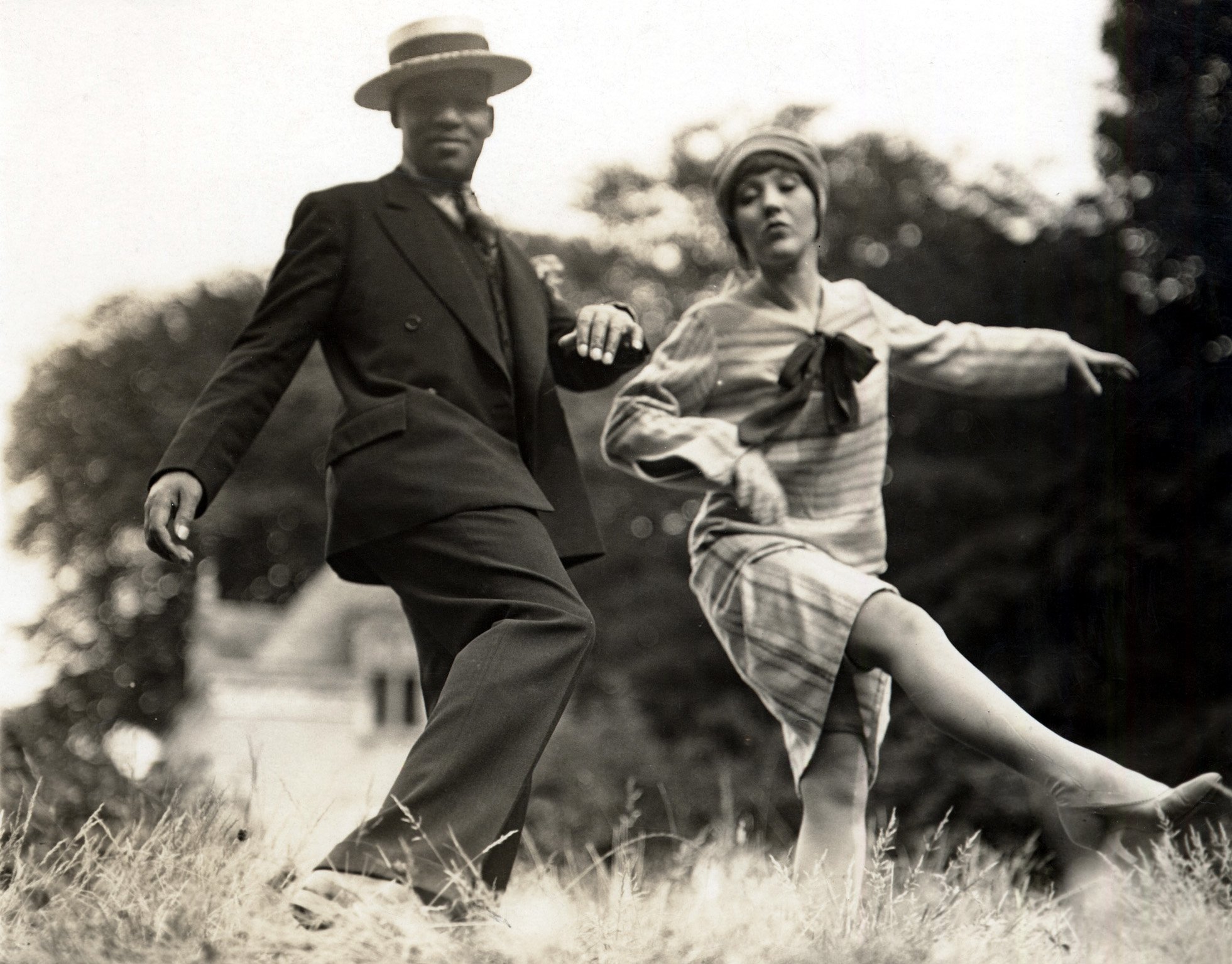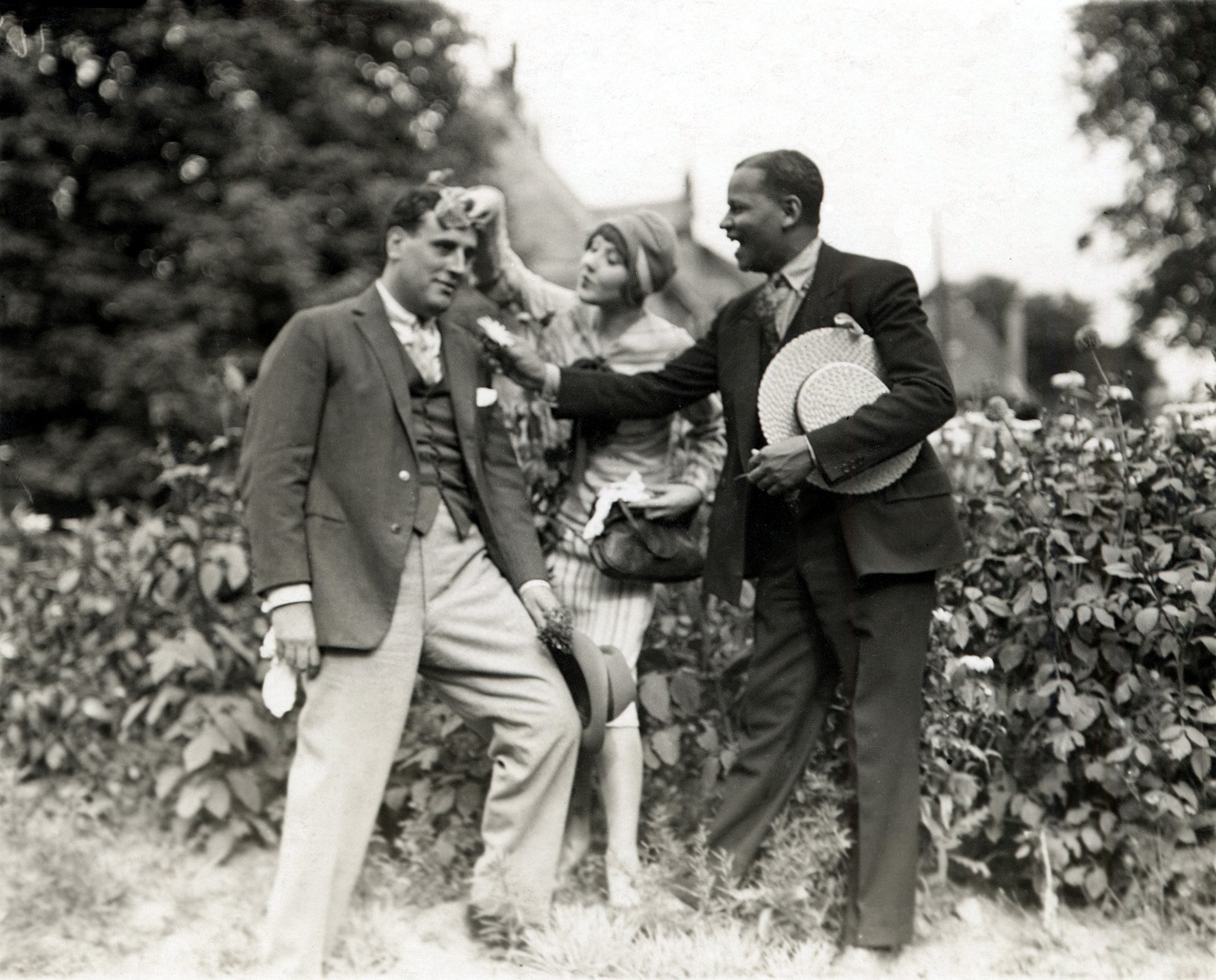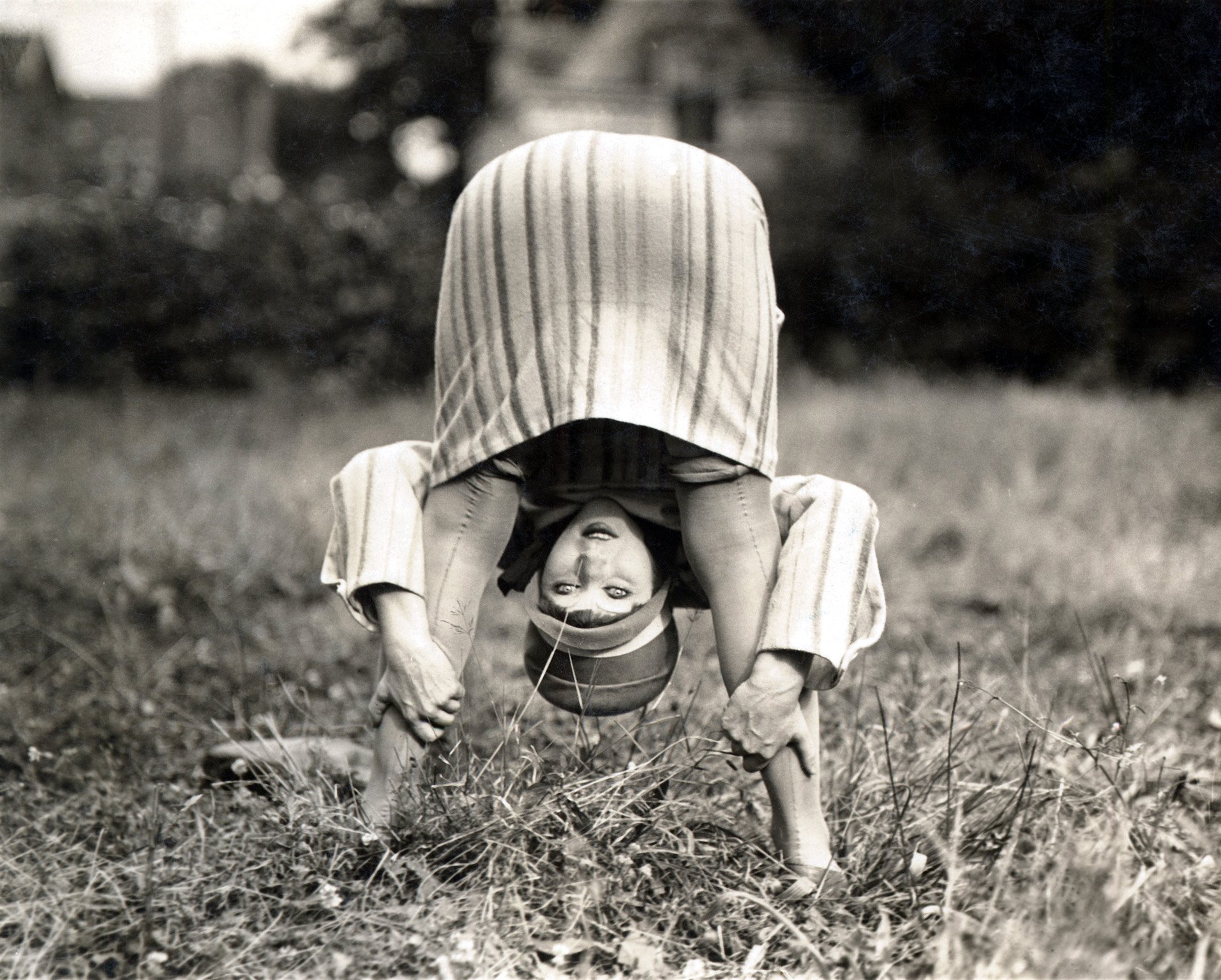
CHARLESTON PARADE
Charleston Parade
(Sur un air de Charleston) (Néo-Film, France, 1927)
dir.: Jean Renoir; script: Pierre Lestringuez; photog.: Jean Bachelet
cast: Catherine Hessling (Dancer), Johnny Huggins (Scientist), Pierre Braunberger (Angel), Pierre Lestringuez (Angel), Jean Renoir (Angel), André Cerf (Angel)
DCP, 24’; bw; intertitles: FR, subtitles: PL, EN; restored 2019; source: Tamasa Distribution
The year is 2028. A war-torn Europe lies in ruins. A researcher from Africa lands in Paris, where he comes across a scantily-clad girl and a bizarre monkey. The girl starts dancing, and this meeting of strangers quickly turns into a lesson on dancing the Charleston.
One of the most surprising pictures in Jean Renoir’s filmography, this short science fiction film, a dance one to boot, ended the director’s experimental period. Renoir himself never answered the question why he made it. Apparently, it happened at the instigation of his life partner Catherine Hessling, who said in an interview once that what she liked most was riding horses and dancing. Hessling’s body, although at times overly seductive and at other times slightly clumsy, plays a material role in Renoir’s film and is highly visible (in contrast to Loïe Fuller, one of the pioneers of modern dance, whose body used to be draped in large white sheets).
Was Renoir proposing a vision of an inverted world, or was he commenting on the post-colonial reality? The movie is full of contradictions. The Charleston, whose rhythm has its roots in West Africa, is here an indigenous French dance. And Africa, in turn, the most dynamically developing continent in terms of technology, is represented in Paris by a girl in native dress and... a monkey. Attention is drawn to the counterpoints of black and white (the actress’s white face with black lipstick, and the actor’s blacked-up face with white lips) and the negative stock photos. Renoir plays with both the language and technique of cinema: at one point, he seems to wink at the viewer with the shot of the French symbol of the Eiffel Tower almost broken in two. The director himself even appears in the film as one of the six angels. (KB)
Restored in 4K in 2019 by StudioCanal with funding provided by the Centre national du cinéma et de l’image animée (CNC).
introduction to the movie: Iga Harasimowicz
section: DIRECTION: FRANCE
music by: Miłosz Oleniecki
FRIDAY | OCTOBER 29
20:00 | screening room: MAŁA CZARNA
presented with: The Flying Ace

